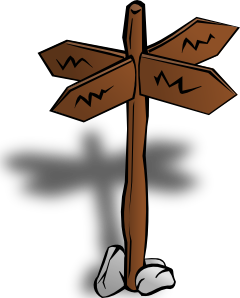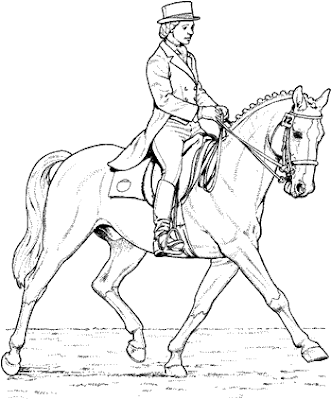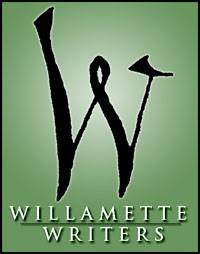
I have two young friends who are in quandaries about their directions in life. One is beginning her junior year at a small liberal arts college, the other just opted out of law school following orientation. E is questioning her major in art (photography) and G is wondering "now what?!"
I'm on the side of following their passions. With the caveat that they may encounter detours along the way, and they should be open to unanticipated routes toward their goals.
In reading news articles about folks coping with the current recession, I came upon reference to "survival jobs." Folks who made more money than I ever did have had to lower their expectations of finding a new job at their former pay range -- so they've "settled" for jobs with which they could survive until the economy recovers and they can resume their former careers. How amusing. It seems that I had 30 years of "survival jobs" with the State of Oregon. They paid the rent and enabled me to own a horse, but were by no means a career. I managed to apply my love of and skills in writing in all the jobs I held, but the topics and projects were of someone else's choosing.
I graduated from college in a different society than my young friends have today. Yes "Women's Lib" was underway, but real life expectations were that young women would work until they married, at which time they would probably continue working until children came along. Most women didn't have careers. They had jobs. The jobs were "survival" until Mr. Right came along and then supplemented Mr. Right's salary. There wasn't much mention as to what happened if Mr. Right never appeared...which is my case.
I think my two friends deserve better than "survival jobs" for the next 30-40 years. They are starting their lives in a society that more readily accepts young women on a career path of their own. I'm rooting for them to go for the gold.
Now, they might have to settle for survival jobs for a few years while they get their careers off and running. And they should be aware that no matter what career they follow, it will have less than desirable aspects. Quite often, the newbies are expected to begin with the undesirable duties. They need to decide if the end goal is worth the early scud work.
They also need to know that life is full of changes. A decision made at age 20-something doesn't necessarily lock them in for the remainder of their lives. We never know what's down the road. A college degree in one area doesn't necessarily mean that's what one will be doing for the remainder of one's life, if at all. People's lives veer off into all kinds of unexpected directions.
My father always told me that an education teaches one how to learn. A liberal arts degree exposes one to a variety of subjects -- a good, general, all-around education that prepares the student for whatever may come. I applied my BA in English to fish and wildlife management for 24 years. I knew nothing about raising fish or hunting and trapping when I started. But I was capable of learning enough about these topics to write about them in a manner that was scientifically accurate yet understandable to a lay audience.
My 30 years of state employment also exposed me to statutes and rules. I spent six years applying statute, rule, and legal opinions to an appeals process. My initial research and draft of the agency stance had the potential to (and did on a couple of occasions) go to the Oregon Court of Appeals.
Now, nothing in my liberal arts education was specific to science or law, yet I was able to apply my education to jobs in both of these arenas. Was my BA in English a waste of money because my degree wasn't a "job title?" I don't think so. It prepared me to apply my knowledge and skills in any direction I chose to go.
So...I'm willing to be a sounding board, cheerleader, or whatever E and G need to aid them in the pursuit of their passions. Or just be one person they know is on their side.
E and G are smart and resourceful young ladies. They will be successful no matter what careers they pursue. Success as defined by each of them.
Sure, it's scary to step out into the world as an adult and leave behind the structure of school. There's the financial pressure to repay school loans and earn a livable wage. There's the fear of starting out in the wrong direction. But I have confidence that E will do well as a photographer -- heck, she isn't even out of school yet and she's already had "jobs" taking senior pictures and wedding photos! And I'm sure G will come up with a career that suits her interests and skills as well as allows for riding time.
Decisions. Very intimidating at the beginning of one's life. And surprising at mid-life when you look back at where they brought you.
 I have two young friends who are in quandaries about their directions in life. One is beginning her junior year at a small liberal arts college, the other just opted out of law school following orientation. E is questioning her major in art (photography) and G is wondering "now what?!"
I have two young friends who are in quandaries about their directions in life. One is beginning her junior year at a small liberal arts college, the other just opted out of law school following orientation. E is questioning her major in art (photography) and G is wondering "now what?!"


 This is one of the most fantastic writers' organizations in the country. Regardless of what you write (fiction, nonfiction, screenplays, graphic novels, plays, etc.) it has you covered.
This is one of the most fantastic writers' organizations in the country. Regardless of what you write (fiction, nonfiction, screenplays, graphic novels, plays, etc.) it has you covered.
